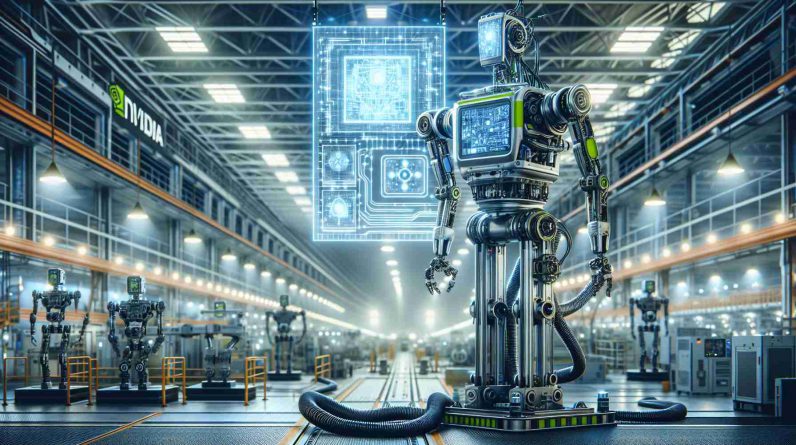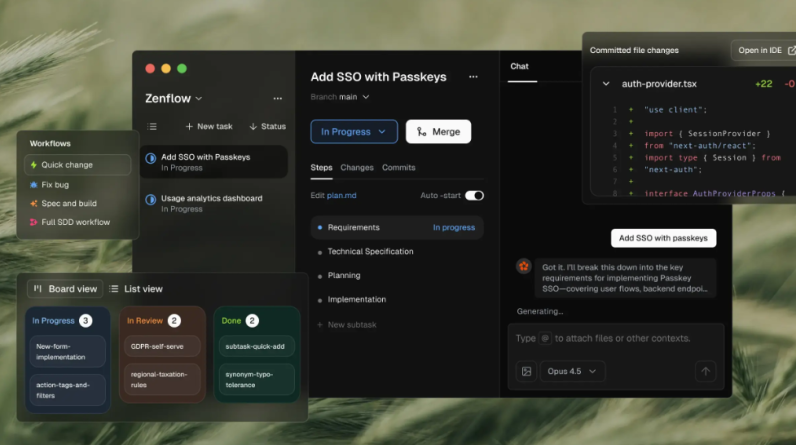
Collaboration aiming for safer, smarter AI-powered robots
Rockwell Automation is expanding its collaboration with NVIDIA, setting sights on the development of safer and more intelligent AI-infused industrial mobile robots (AMRs). With this alliance kicking off earlier this year, Rockwell is intent on broadening the influence of artificial intelligence within manufacturing. This partnership now extends into robotics, offering support for the implementation of AI in autonomous mobile robots, aiming to improve performance and efficiency.
Integrating cutting-edge robotic platforms
Rockwell is bringing AMRs and automation applications to industrial customers seeking higher efficiency in their factories. By integrating NVIDIA’s Isaac robotic platform, Rockwell aims to unlock untapped potential in this sector.
Fostering interoperable data and lifelike simulations
Furthermore, Rockwell continues to integrate NVIDIA’s Omniverse Cloud APIs with its Emulate3D software, providing users with interoperable data, live collaboration, and photorealistic rendering to design, create, and operate digital twins of manufacturing systems on an industrial scale.
AI leads the smart manufacturing transformation
According to the “State of Smart Manufacturing Report,” artificial intelligence is the leading function expected to drive significant business outcomes in manufacturing. In fact, 83% of manufacturers anticipate the utilization of generative AI in their operations by 2024. As part of this collaboration, NVIDIA joins the Rockwell Automation PartnerNetwork, equipping Rockwell customers with an array of applications to enhance the resilience, agility, and sustainability of their operations.
For more information, visit www.rockwellautomation.com.
The article describes a collaboration between Rockwell Automation and NVIDIA aimed at advancing AI integration in industrial settings, particularly with mobile robots. To complement the information provided in the article, here are some additional insights and contextual facts:
Artificial Intelligence in the Industry:
Artificial intelligence is revolutionizing industrial automation by enabling machines to perform complex tasks without explicit programming. The use of AI in industrial robots can lead to improved decision-making, predictive maintenance, and adaptive production processes.
The Role of NVIDIA:
NVIDIA is best known for its graphics processing units (GPUs) but has also become a significant player in the AI space through its hardware and platforms, such as the Isaac robotics platform and the Omniverse Cloud APIs. These technologies are crucial for processing the vast amounts of data necessary for AI and rendering realistic simulations for digital twins and other applications.
Industrial Mobile Robots (AMRs):
AMRs are robotic systems capable of navigating autonomously within industrial environments. They are used to transport materials and perform multiple tasks throughout facilities, improving logistics and reducing human labor in repetitive or hazardous tasks.
Main Advantages of AI-Powered Robots:
– Increased Efficiency: AI can optimize routes for AMRs, reducing time spent on transportation and increasing productivity.
– Enhanced Safety: Intelligent robots can better understand their environment, leading to fewer accidents and improved human-robot collaboration.
– Scalability: AI algorithms can be updated and improved over time, allowing robots to adapt to new tasks and environments.
Main Disadvantages of AI-Powered Robots:
– Implementation Cost: High initial investment in technology and infrastructure is required for integrating AI into industrial processes.
– Complexity: Setting up an AI system can be technically challenging, requiring specialized knowledge and support.
– Job Displacement: Automation can result in the displacement of workers from tasks now performed by robots, leading to potential social and economic impacts.
Key Challenges and Controversies:
– Technical Challenges: Embedding AI into industrial robots involves overcoming technical hurdles related to data collection, machine learning model training, and real-time processing.
– Skill Gap: There is a growing need for workers skilled in AI, robotics, and data science to develop and maintain these advanced systems.
– Security: With increased connectivity, there are heightened concerns about cybersecurity and the potential for industrial espionage or sabotage.
Related Links:
– For more on NVIDIA’s work in AI and robotics, visit NVIDIA.
– To learn more about the impact of AI on manufacturing and the workforce, visit websites of industry organizations such as the Advanced Robotics for Manufacturing (ARM) Institute or the National Association of Manufacturers (NAM).
This information encompasses a broader discussion about the adoption of AI in the industrial sector and some of the implications of such technological integration.





